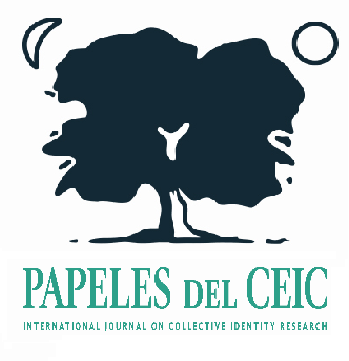Religión y espacio público: el conflicto en torno a la regulación del velo integral islámico
##plugins.themes.bootstrap3.article.main##
##plugins.themes.bootstrap3.article.sidebar##
Marian Burchardt
Resumen
En la última década la cuestión del velo integral ha generado acalorados debates políticos en numerosos países europeos y ha sido objeto de una creciente regulación jurídica a nivel europeo, estatal y local. A partir de un estudio de caso, este artículo se centra en analizar en profundidad los procesos de problematización y regulación legal del velo integral en Cataluña. El objetivo es examinar las razones que explican la emergencia de esta problemática y analizar de qué manera se construyen los argumentos que apoyan o desaprueban la regulación local del uso del velo integral en el espacio público. El objetivo es comprender cómo los discursos en torno a la laicidad y la religión en el espacio público se traducen en posiciones concretas, y cómo se configuran, articulan y confrontan diferentes concepciones sobre el significado, y los límites, de la libertad religiosa en el contexto de ese conflicto. El artículo concluye afirmando la necesidad de ubicar el conflicto más allá de la cuestión religiosa y entenderlo, también, como consecuencia de la naturaleza excluyente del espacio público contemporáneo y la creciente regulación de sus usos.
Cómo citar
##plugins.themes.bootstrap3.article.details##
islam, espacio público, religión, secularización
Los contenidos de Papeles del CEIC se distribuyen bajo la licencia Creative Commons Reconocimiento-NoComercial-SinObraDerivada 3.0 España (CC BY-NC-ND 3.0 ES)
Usted es libre de:
- copiar, distribuir y comunicar públicamente la obra
Bajo las condiciones siguientes:
- Reconocimiento — Debe reconocer los créditos de la obra de la manera especificada por el autor o el licenciador (pero no de una manera que sugiera que tiene su apoyo o apoyan el uso que hace de su obra).
- No comercial — No puede utilizar esta obra para fines comerciales.
- Sin obras derivadas — No se puede alterar, transformar o generar una obra derivada a partir de esta obra.
Entendiendo que:
- Renuncia — Alguna de estas condiciones puede no aplicarse si se obtiene el permiso del titular de los derechos de autor
- Dominio Público — Cuando la obra o alguno de sus elementos se halle en el dominio público según la ley vigente aplicable, esta situación no quedará afectada por la licencia.
- Otros derechos — Los derechos siguientes no quedan afectados por la licencia de ninguna manera:
- Los derechos derivados de usos legítimos u otras limitaciones reconocidas por ley no se ven afectados por lo anterior.
- Los derechos morales del autor;
- Derechos que pueden ostentar otras personas sobre la propia obra o su uso, como por ejemplo derechos de imagen o de privacidad.
- Aviso — Al reutilizar o distribuir la obra, tiene que dejar bien claro los términos de la licencia de esta obra.


 http://orcid.org/0000-0002-1773-4874
http://orcid.org/0000-0002-1773-4874